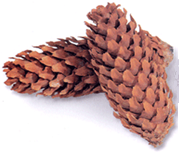Contact Chris Van Esbroeck: cvanesbroeck@mvca.on.ca
Presentation Video:
We know that the non-growing season plays an important role in phosphorus (P) export due to the volume of runoff (surface and subsurface) leaving fields during this time. From a management perspective, we can decide how we leave fields prior to this season. The first thing we need to do is protect our soil. So we should be promoting residue cover, but there is more we need to do. We also need to be thinking about the rate, placement, source and timing of P applications. These all influence what are called incidental losses, or direct fertilizer losses. These are the losses that occur during runoff events following P applications – due to elevated P concentrations, relative to what we’d typically see in background levels. Following P application it can take weeks to months before concentrations in runoff (surface and subsurface) return to background levels.
We take this chance every time P is applied. So to limit the risk, we should avoid applying P during periods where a large runoff response is likely. We should also make sure P is incorporated below the surface, because this significantly reduces direct fertilizer losses.
Here are examples of these types of losses via tile drainage from field-scale studies in Ontario. The two sites are well managed, they maintain residue cover and P applications are replacing what the crop takes off. Soil P levels are not built up beyond what is beneficial.
At both sites, applications were made in the fall of 2011. These were intended to supply requirements for multiple crops. Site 2 used surface applied manure and subsurface banded MAP. Site 3 used, MAP with shallow incorporation. Following these applications, both sites were hit by a major weather system (Nov 29 – and another Dec 4). The influence is obvious when you compare losses between the season with P application relative to the season without.
Now we were not explicitly testing for the influence fertilization practices on losses; however, with the timing of the application relative to the timing of rainfall, we ended up with a field-scale example of this management issue. The influence was much more obvious at Site 2. At Site 2, losses during these two events following application resulted in the majority of P transport for the following 18 month period.
Overall the losses from these systems were relatively low compared to other studies. But what I wanted to show was that even in these already strong systems that there are further opportunities for improvement.
Can we avoid fall application? Can we incorporate without losing the benefits of reduced tillage? OR do we live with this because the system meets other objectives – it’s a real balancing act.





